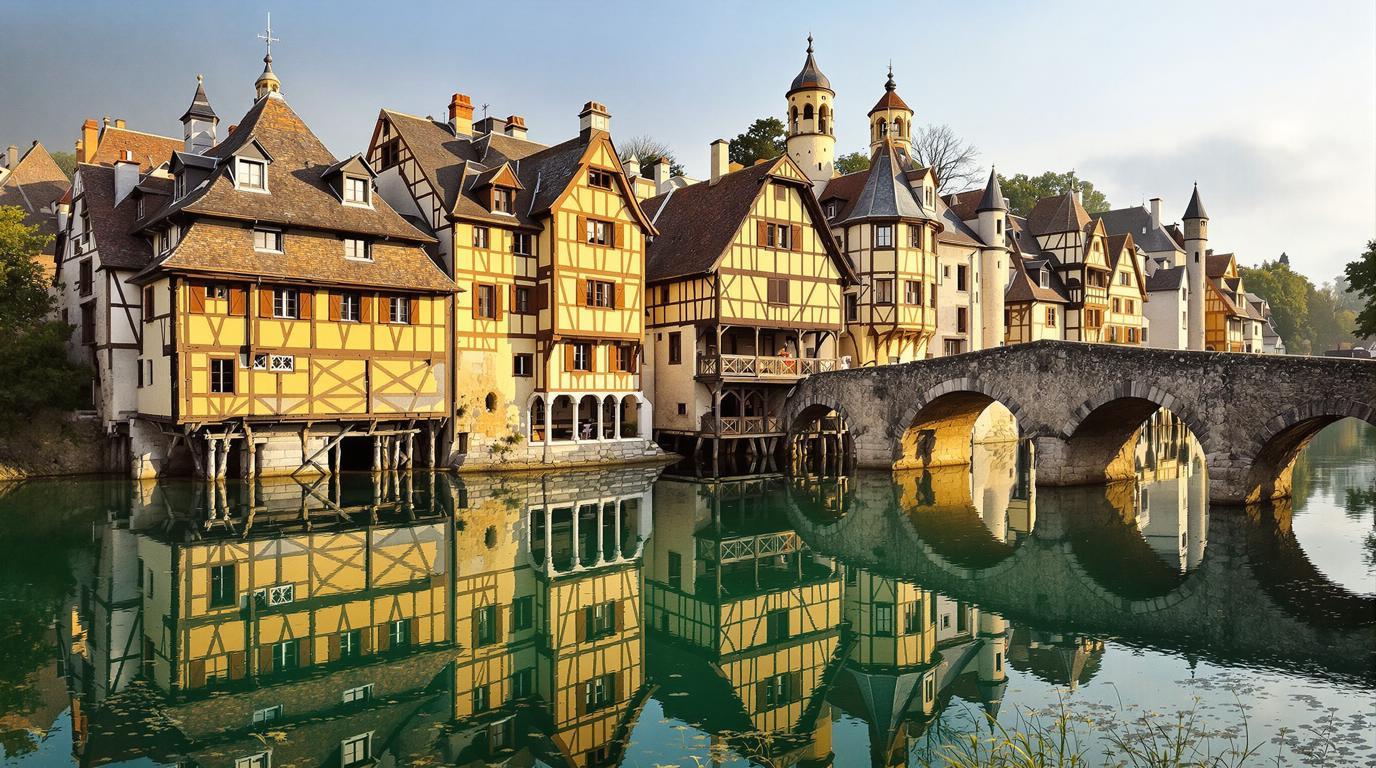From medieval charm to artistic heritage, Ornans captivates visitors with its unique blend of natural beauty and cultural significance. This picturesque French town, nicknamed the “Little Venice of Franche-Comté,” offers an authentic escape from tourist-heavy destinations.
A riverside town with houses on stilts
The first glimpse of Ornans reveals its most distinctive feature: charming old houses built on stilts over the crystalline Loue River. These historic structures create perfect mirror images in the water below, offering photographers an irresistible subject that changes with every hour of daylight.
Local architect Jean Mauvilley explains,
“Our stilted houses represent centuries of adaptation to riverside living. Each spring flood reshapes our relationship with the Loue, much as it has for generations.”
The birthplace of realism in art
Ornans gained international significance as the birthplace of Gustave Courbet, the pioneering realist painter who revolutionized 19th-century art. The Musée Gustave Courbet, housed in the artist’s former home, displays his masterpieces including landscapes inspired by the surrounding countryside.
Where limestone cliffs meet emerald waters
The town sits within a dramatic landscape where towering limestone formations frame the valley. The Roche du Mont offers breathtaking panoramic views for those willing to hike its trails. For adventure seekers, the Via Ferrata climbing route provides an exhilarating way to experience the region’s dramatic topography.
A gastronomic journey through Franche-Comté
Ornans’ culinary scene celebrates regional specialties with an emphasis on fresh, local ingredients. Sample the renowned Comté cheese, trout from the Loue River, or the seasonal morel mushrooms. La Table de Gustave offers an exceptional dining experience where classic French techniques meet local traditions.
Chef Marie Dubois of Le P’tit Comtois proudly states,
“Our kitchen follows the rhythm of the seasons. When you taste our food, you’re experiencing the essence of Franche-Comté in every bite.”
Stone bridges with centuries of stories
The Grand Pont d’Ornans and Pont de Nahin span the Loue River, providing not just practical crossings but incredible vantage points for photographing the town’s reflection. These historic bridges have witnessed countless moments in the town’s evolution, from medieval commerce to modern-day tourism.
A destination for all seasons
While spring and summer bring lush greenery and outdoor activities like canoeing on the crystal-clear waters, autumn transforms the valley into a spectacular display of red and gold. Winter offers budget-conscious travelers lower accommodation rates and a peaceful atmosphere reminiscent of a Courbet painting.
Beyond Ornans: day trips and discoveries
Use Ornans as your base to explore the wider Loue Valley and Jura region. The nearby forests offer excellent hiking trails, while the Source of the Loue presents a mystical cave where the river emerges fully formed from underground.
Where to stay: riverside charm
The Hôtel de France provides comfortable accommodations with riverside views and excellent local cuisine. For a more intimate experience, several bed and breakfasts in renovated historic buildings offer authentic stays that connect visitors with the town’s heritage.
Historian Claude Revel notes,
“Ornans maintains a remarkable balance between preserving its past and embracing its future. Few places in France retain such authentic character.”
The perfect photograph: when to capture Ornans
Early morning mist rising from the Loue creates an ethereal atmosphere that transforms the town into something from a fairy tale. For the most magical images, arrive at dawn when the first light illuminates the stilted houses and their perfect reflections in the still water below.
Ornans offers the rare opportunity to step into a living painting – a place where art, history, and nature create an experience that lingers in memory long after you’ve returned home. This hidden gem of eastern France reveals how sometimes the most profound travel experiences come from the smallest places.
